平成29年02月11日 土曜日号
“丸に小菊 平成23年”
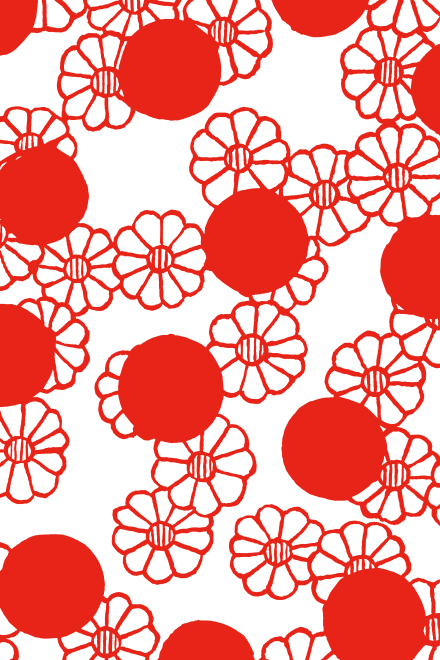
桜が春の花なら
菊は秋の花。
小菊は日々の暮らしの
あらゆる場面に登場する。
日本人が最も身近に
感じている花のひとつではないだろうか。
(脇阪 克二)
"Dots and chrysanthemum"(2011,by Katsuji Wakisaka)
If you say cherry blossom is the flower of spring,
Then chrysanthemum is the one of autumn.
Chrysanthemum is everywhere in our daily life.
I suppose it's one of the most familiar flowers in Japan.
| English translation by LI XIAO XIAO |
"Des chrysanthèmes ronds"(2011, par Katsuji Wakisaka)
Si les cerisiers sont les fleurs du printemps,
Les chrysanthèmes sont celles de l’automne.
Elles sont partout dans notre vie quotidienne.
Je suppose qu’il s’agit d’une des fleurs
les plus familières pour le peuple japonais.
| Traduction française par Jean-Baptiste Fauvel Matsumoto |
"圓與小菊"(2011, 脇阪 克二)
如果說春天的代表是櫻花,
那秋天則是菊花。
小菊常見於日常生活中的各種場景,
是日本人最熟悉的花卉之一。
| 中譯 : 李 瀟瀟 |
→こちらのテキスタイルデザイン商品
(Textile products with this pattern)
平成29年02月08日 水曜日号
“花椿 平成21年”
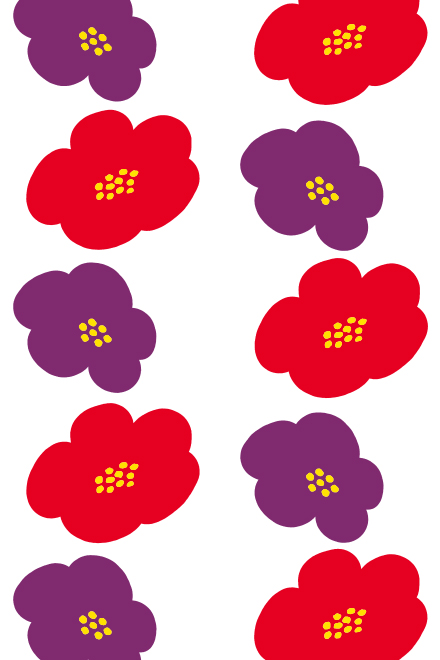
濃い緑の葉の中に鮮やかな赤い花が映える椿。
桜や山吹のように花びらだけを散らせることはなく
花全体が音を立てて地に落ちる。
その音がかえってまわりの静けさを際立たせてくる。
一面の苔の上に赤や白の椿が落ちている状景は
華やかで幽玄。情念の世界を垣間見せてくれる。
(脇阪 克二)
"Camellia flowers"(2009,by Katsuji Wakisaka)
Bright red flowers blooming on the green camellia tree.
Unlike cherry blossom or globeflowers that lose their petals and die,
Camellia falling off by the whole,
Plopping down with a beat,
And all the noise is silenced surround.
This textile represent camellia flowers shade in red or white,
Dropping down on a carpet of moss.
The subtle and profound view strike my eye.
| English translation by LI XIAO XIAO |
"Fleurs de camélia"(2009, par Katsuji Wakisaka)
De belles fleurs rouges vifs qui éclosent sur un fond de feuilles vertes de camélia.
A l’inverse des cerisiers ou des corètes du Japon, dont seuls les pétales tombent,
Les fleurs de camélias choient dans leur intégralité, émettant un son singulier.
Ce même son accentue le silence ambiant.
Notre textile représente des fleurs de camélias rouges et blanches, couchées sur
Un matelas de mousse, invitant nos yeux à un spectacle subtil et profond.
| Traduction française par Jean-Baptiste Fauvel Matsumoto |
"花椿"(2009, 脇阪 克二)
茶花透過濃密的綠葉,露出通紅的臉。
凋謝的時候,不似櫻花或是棣棠般花瓣一片片飄零,
而是整朵墜落,擲地有聲,襯托出山野的寂靜。
我以紅色和白色的茶花墜落的場景作畫,
幽玄華美的景象,讓人沉浸於幻想世界。
| 中譯 : 李 瀟瀟 |
→こちらのテキスタイルデザイン商品
(Textile products with this pattern)
平成29年02月05日 日曜日号
“雪うさぎ 平成22年”
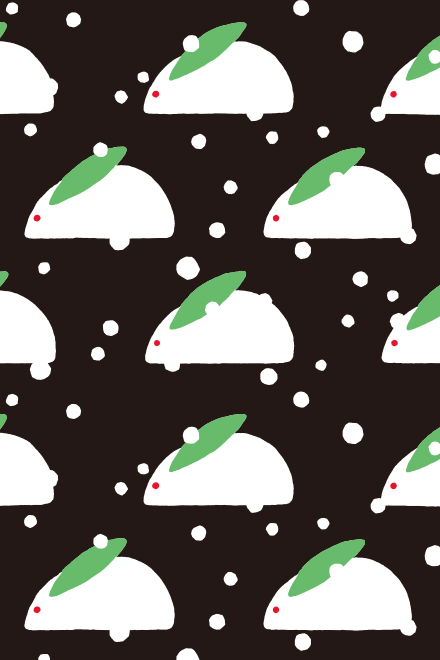
雪をかためてうさぎの形をつくり、南天の赤い実を目に、緑の葉を耳にして、子供達が遊んだ雪うさぎ。
降りしきる雪の中、何頭もの雪うさぎが並んで何かを待っている。それは暖かな春のおとずれだろうか。
(脇阪 克二)
"Snow rabbit"(2010,by Katsuji Wakisaka)
Pack the snow tightly and shape it into a rabbit.
Place two nandina berries to represent the red eyes,
Use green leaves to act as ears,
Here comes the snow rabbit!
One, two, three……Some snow rabbits are arranged in the snow,
Waiting for something.
For the next warm spring? I suppose so.
| English translation by LI XIAO XIAO |
"Lapin de neige"(2010, par Katsuji Wakisaka)
Empiler la neige en lui donnant la forme d’un lapin.
Placer deux fruits de Nandina pour les yeux,
Des feuilles vertes pour les oreilles,
Voilà le Lapin de Neige, avec les enfants jouent.
Sous la neige qui ne cesse de tomber, une multitude de
Lapins de Neige attend patiemment, les uns à côté des autres.
Attendent-ils la venue du doux printemps?
Que la Nouvelle Année du Lapin vous sourie!
| Traduction française par Jean-Baptiste Fauvel Matsumoto |
"雪兔"(2010, 胁阪 克二)
把雪捏成小團,用南天竹的紅果作眼睛,綠葉作兔耳,
這是日本的小朋友們常做的雪兔。
幾只雪兔排布在雪地裏,
等待。
或許是在等下一個暖春的來臨。
| 中译 : 李 瀟瀟 |
→こちらのテキスタイルデザイン商品
(Textile products with this pattern)
平成29年02月01日 水曜日号
“椿文 平成23年”
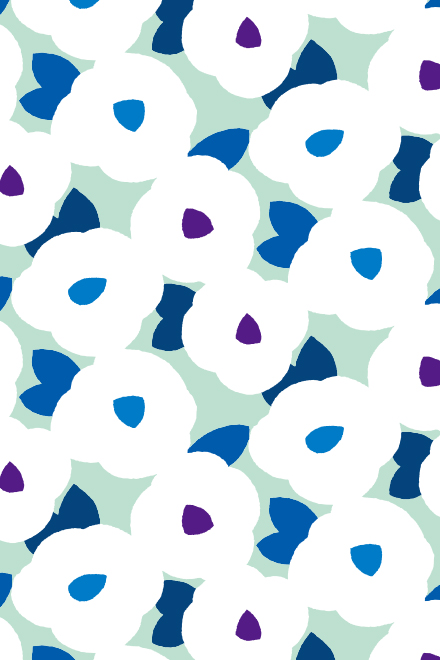
椿にはいろんな表情があるが
これはかわいい椿文様
ぽっちゃりした椿の花が
並んでいるのだが
おおらかで暖かい花に
包まれているようでしあわせな気持になれる
(脇阪 克二)
"Camellia"(2011,by Katsuji Wakisaka)
Lady Camellia, has many faces,
I drew some, chubby and lovely ones,
Standing there side by side.
Lady Camellia,
Cheerful and generous,
Warming our hearts and make us feel happy.
| English translation by LI XIAO XIAO |
"Sceau du camélia"(2011, par Katsuji Wakisaka)
Le camélia a de nombreux aspects.
Quel joli sceau en forme de camélia!
De grosses fleurs de camélia se succèdent généreusement,
Comme si nous étions entourés de ces fleurs chaleureuses
qui nous rendent si heureux.
| Traduction française par Jean-Baptiste Fauvel Matsumoto |
"椿文"(2011, 脇阪 克二)
椿花姿態萬千,
我描繪的是可愛版椿文。
將這些圓潤的花兒平鋪在畫布上,
仿佛環繞在溫暖柔和的花叢中,
心中漾起療愈的幸福感。
| 中譯 : 李 瀟瀟 |
→こちらのテキスタイルデザイン商品
(Textile products with this pattern)
平成29年01月28日 土曜日号
“清流に梅 平成23年”
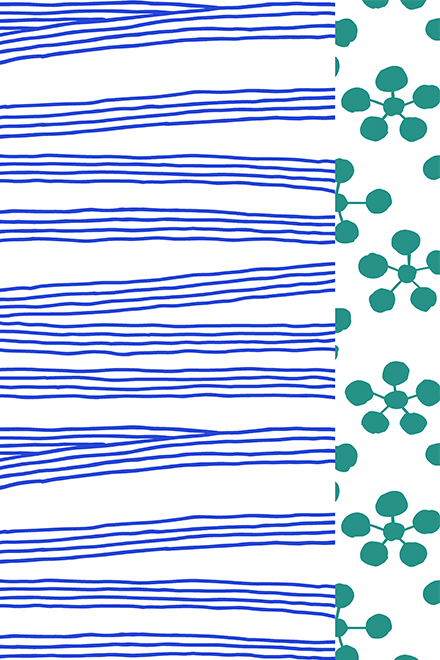
澄んだ水がいく筋も
流れ下っていく。
風は冷たいが、川のそばの
梅は真白い花を咲かせている。
見ていると心が澄み切って気持ちがいい。
(脇阪 克二)
"Blossoms and streams"(2011,,by Katsuji Wakisaka)
Clear streams flowing down.
Plum trees by the riverside blooms with pure white,
Regardless of the chilly wind.
Seeing this,
My mind becomes clear and pure.
| English translation by LI XIAO XIAO |
"Prunier dans un courant limpide"(2011,, par Katsuji Wakisaka)
Un courant limpide s'écoule paisiblement.
Les pruniers au bord de la rivière fleurissent d'un blanc pur,
s'inquiétant peu du vent froid. À la vue d'un tel spectacle,
mon âme devient claire et pure.
| Traduction française par Jean-Baptiste Fauvel Matsumoto |
"清流與梅"(2011,, 胁阪 克二)
淙淙流水,潺潺向下。
寒溪兩側有雪梅,
冰肌玉骨,傲寒獨放。
此景令我內心澄澈如洗。
| 中译 : 李 瀟瀟 |
→こちらのテキスタイルデザイン商品
(Textile products with this pattern)
平成29年01月25日 水曜日号
“はじまり 平成28年”
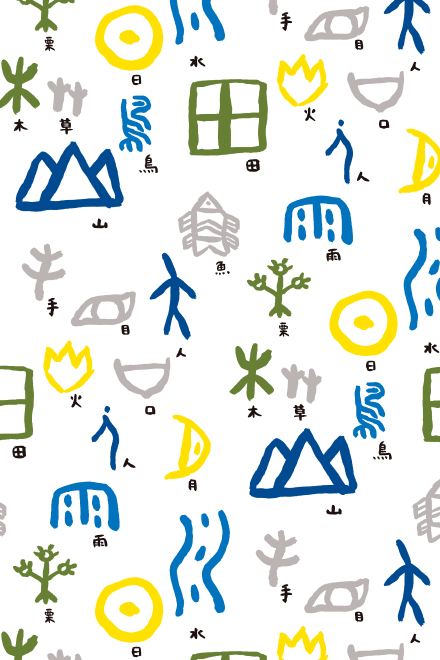

物事には はじまりがある
漢字は 物の形をまねて書くことから
はじまり 少しずつ進化して
現在の形になってきた
人も生まれて 人生がはじまり
成長していく
はじまりのころは
漢字も人も かわいいですね
(脇阪 克二)
"Beginning"(2016,by Katsuji Wakisaka)
Everything has a beginning.
Kanji (Chinese characters) is no exception.
The earliest kanji were just pictographs that kind of looked like something.
Then it developed, step by step, becoming what they are today.
So does man.
We were born to live, growing to complete individuals.
Things are fascinating at the very beginning,
Both for kanji and man.
| English translation by LI XIAO XIAO |
"Commencement"(2016, par Katsuji Wakisaka)
À chaque chose, son commencement.
L'écriture japonais a été créée
en représentant la forme des objets.
Au départ, elle a évolué petit à petit
Pour arriver à sa forme actuelle.
Les hommes naissent également,
Marquant le début de la vie,
Et grandissent d'année en année.
Cette étape de commencement est charmante,
Tant pour l'écriture que pour les hommes.
| Traduction française par Jean-Baptiste Fauvel Matsumoto |
"始"(2016, 胁阪 克二)
萬物皆有始。
漢字是從最初的象形符號,
一步步進化而來。
人也是如此。
出世,成長,體驗人生。
萬事萬物的初始,
總是充滿著吸引力。
| 中译 : 李 瀟瀟 |
→こちらのテキスタイルデザイン商品
(Textile products with this pattern)
平成29年01月21日 土曜日号
“寒紅梅 平成21年”
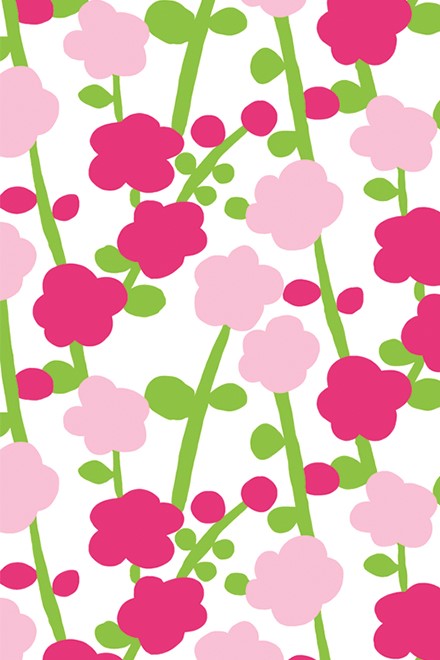
空気全体が凍りつくような大寒のころ。
寒いけれど心も体もピーンと張って爽快!!
雪が降ることも多いこの時期に、固い蕾を破って花開く寒紅梅。
きびしい寒さに負けずふくらんでくる梅に
来る春を予感し心がおどる。
(脇阪 克二)
"Kankōbai / Winter plum blossoms"(2009,by Katsuji Wakisaka)
The frosty season sets in,
I feel like I'm freezing, both mind and body, but refreshing!
It snows a lot in this season, but look!
Winter plum came into view,
Buds of which burst into bloom.
Strong in the severe coldness,
These winter plum blossoms make me feel that spring is coming soon.
| English translation by LI XIAO XIAO |
"Kankōbai / Fleurs de pruniers hivernales"(2009, par Katsuji Wakisaka)
Alors que la saison des gels, la plus froide de l'hiver, approche,
Le froid s'installe mais je me sens revigoré, corps et âme.
En cette période riche en neige,
les bourgeons des pruniers d'hiver repoussent la neige et éclosent.
Sans s'avouer vaincu par ce froid terrible, ils annoncent le printemps,
réchauffant nos cœurs de par son approche.
| Traduction française par Jean-Baptiste Fauvel Matsumoto |
"寒紅梅"(2009, 脇阪 克二)
大寒時節,空氣仿佛都凍結。
嚴寒刺骨,但身心卻感覺清爽!
在這個降雪頻繁的季節,
寒紅梅傲然綻放。
不畏風雪努力盛開的梅花,
讓人雀躍地期待春天的來臨。
| 中譯 : 李 瀟瀟 |
→こちらのテキスタイルデザイン商品
(Textile products with this pattern)
平成29年01月18日 水曜日号
“大寒 平成25年”

二十四節気のひとつ、大寒。
二十四節気とは、中国で用いられていた
暦で一年を二十四の季節に分けたもの。
旧暦でもあるので今の気候とは少しずれがある。
しかしある時代まで、日本の農作業の時期を知る
大切な基準であり、
季節の目安されてきた。
(脇阪 克二)
"Daikan / Big chill"(2013,by Katsuji Wakisaka)
Daikan is one of the 24 solar terms.
Solar Terms is a calendar of 24 seasons that had been used in China.
Actually, there is a slight gap between the climate of today.
However, up to certain period, it was the important basis to know the time for Japanese agricultural labors and it also had been considered useful as seasonal yardstick in daily life.
| English translation by LI XIAO XIAO |
"Daikan / Grand Froid"(2013, par Katsuji Wakisaka)
Le mot Daikan est un des 24 termes du calendrier solaire.
Le calendrier solaire répertorie les 24 termes saisonniers utilisés autrefois en Chine.
Aujourd'hui, il existe un léger décalage entre ces termes et le climat actuel.
Cependant, jusqu'à une certaine période, ils servaient de base importante au Japon pour le travail agricole et sont devenues des indicateurs saisonniers avec le temps.
| Traduction française par Jean-Baptiste Fauvel Matsumoto |
"大寒"(2013, 胁阪 克二)
大寒是二十四節氣之一。
二十四節氣是指中國農曆中表示季節變遷的24個特定節令。
二十四節氣按照舊曆的曆法劃分,
因此與現今的氣候稍有誤差。
但它曾是指導日本農作時節重要的“農業氣候曆”。
| 中译 : 李 瀟瀟 |
→こちらのテキスタイルデザイン商品
(Textile products with this pattern)
平成29年01月14日 土曜日号
“大根かぶら 平成26年”
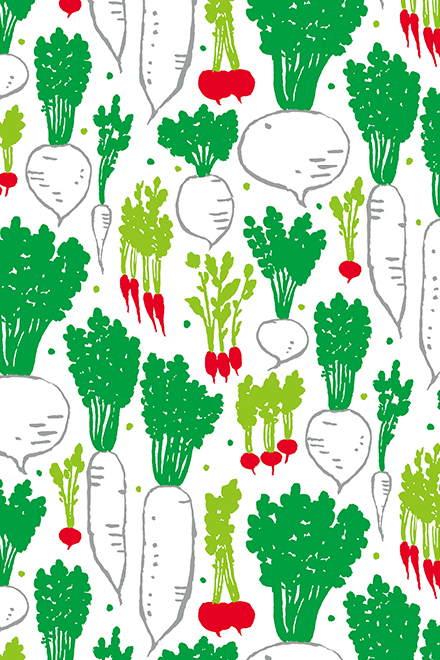
大根は一年中あるが、おいしいのは冬。
寒い日のおでんの大根は何とも言えない。
かぶらむしも体が暖まる冬の醍醐味のひとつ。
京漬物の代表千枚漬は聖護院大根。
こう考えると冬の食に大根とかぶらは欠かせない。
(脇阪 克二)
"Daikon kabura / Winter root vegetables"(2014,by Katsuji Wakisaka)
Daikon, Japanese white radish, is the most delicious in winter.
It’s indescribable to have a piece of nicely cooked daikon in oden on such a cold day.
Kabura-mushi, a steamed turnip dish, is warming up my body.
That's one of the best part of winter.
Senmaiduke, most famous of Japanese pickles from Kyoto, is made of shogoin-daikon, a round Japanese radish.
Come to think of it, daikon and kabura are essential relish for winter dishes.
| English translation by LI XIAO XIAO |
"Daikon & Kabura / Radis blanc & Navet"(2014, par Katsuji Wakisaka)
Le daikon, appelé radis blanc ou radis chinois en France, est le plus délicieux des légumes d'hiver. Le plaisir de manger un morceau de radis blanc à la façon oden par un jour d'hiver aussi froid est indescriptible.
Le Kabura-mushi, navet cuit à la vapeur, vous réchauffe le corps. C'est un des meilleurs moments de l'hiver.
Les Senmaizuke, légumes conservés dans du vinaigre les plus connus de Kyoto, sont faits à partir de shogoin-daikon, un radis blanc et rond japonais.
En y réfléchissant bien, le radis blanc et le navet sont des ingrédients essentiels à la cuisine hivernale japonaise.
| Traduction française par Jean-Baptiste Fauvel Matsumoto |
"蘿蔔"(2014, 脇阪 克二)
蘿蔔一年四季都有,冬天最美味。
寒冬時節關東煮裡蘿蔔的滋味妙不可言。
热腾腾的蒸蕪菁也是極好的。
京都聖護院蘿蔔更是京漬物代表之一千枚漬的食材。
蘿蔔與蕪菁可謂是冬日餐桌上不可缺少的美食。
| 中譯 : 李 瀟瀟 |
→こちらのテキスタイルデザイン商品
(Textile products with this pattern)
平成29年01月11日 水曜日号
“金襴緞子 平成22年”

金襴緞子は金箔を織りこんだ
緞子織の美しい絹織物で
豪華な花嫁衣裳の打ちかけや帯などに使われる。
主に京都西陣で作られてきており
唐文様を中心に創意工夫されてきた。
菊と梅で構成したSOU・SOUの金襴緞子。
(脇阪 克二)
"Kinrandonsu / Nishijin gold damask"(2010,by Katsuji Wakisaka)
Kinrandonsu, or gold brocades and damasks, are used in uchikake (a highly formal kimono) or obi (sash for kimono) of luxurious bridal costume.
They are mainly made around Nishijin area Kyoto,
Expressing foliage scroll pattern in original ways.
This textile of SOU・SOU’s kinrandonsu consisting chrysanthemum and plum blossoms.
| English translation by LI XIAO XIAO |
"Kinrandonsu / Damas doré de Nishijin"(2010, par Katsuji Wakisaka)
Kinrandonsu, brocart ou damas, sont utilisés pour les uchikake (Kimono pour les grandes occasions) ou les obi (ceinture de Kimono) des costumes de mariages de luxe.
Ils sont principalement réalisés à Nishijin à Kyoto, représentant de vieux motifs de manuscrits de façon originale.
Notre design brocart est composé de chrysanthèmes et de fleurs de pruniers.
| Traduction française par Jean-Baptiste Fauvel Matsumoto |
"金襴緞子"(2010, 脇阪 克二)
金襴緞子,是日本金線織的花紋錦緞,
常用在華麗的新娘禮服和服的錦帶。
源自京都的西陣地區,花紋以蔓藤居多。
SOU・SOU的金襴緞子紋樣設計,
是由菊和梅構成的。
| 中譯 : 李 瀟瀟 |
→こちらのテキスタイルデザイン商品
(Textile products with this pattern)
平成29年01月07日 土曜日号
“餅花 平成22年”

正月に柳などの木の枝に
小さい餅をくっつけて
一年の五穀豊穣を祈って飾られた。
青い柳に赤と白の水玉状の餅が点々と並び、
軒先から垂れ下がるのを見ると、
お正月が来たのだと、
おめでたい気持ちになってくる。
(脇阪 克二)
"Mochibana / Rice cake flowers"(2010,by Katsuji Wakisaka)
For Japanese New Year's decoration,
People put around small rice cakes on the branches of willow,
Praying for an abundant harvest.
Willows branches of tender green that studded with race flowers of red and white.
I get cheerful at the sight of these rice cake flowers.
| English translation by LI XIAO XIAO |
"Mochihana"(2010, par Katsuji Wakisaka)
Le premier de l'an, les Japonais décorent leurs maisons de petits mochis fixés sur des branches de saules, pour avoir une année de récoltes abondantes.
À la vue de ces petits mochis en formes de gouttes d'eau rouges et blanches sur les saules verts qui tombent des gouttières, l'atmosphère festive du Nouvel An approchant se fait plus forte.
| Traduction française par Jean-Baptiste Fauvel Matsumoto |
"年糕花"(2010, 胁阪 克二)
日本正月時在柳枝上粘上小圓年糕,
做成裝飾品,祈禱來年豐收。
青青柳枝上開出粉紅的雪白的年糕花。
每當看見這挂在屋檐前長垂的柳枝,
心中便湧起對新春的期待。
| 中译 : 李 瀟瀟 |
→こちらのテキスタイルデザイン商品
(Textile products with this pattern)
平成29年01月04日 水曜日号
“酉 平成28年”

シンプルな形のにわとりに
黒で模様を入れる。
赤でアクセントをいれ、
おめでたさを表現。
皆様にとりまして
酉年が良いお年でありますように!!
(脇阪 克二)
"Year of the Rooster"(2016,by Katsuji Wakisaka)
In the simple outline of roosters,
Let's add some black patterns, and
Adorned it with some auspicious red!
Best wishes for an excellent year of the Rooster !!
| English translation by LI XIAO XIAO |
"Le coq"(2016, par Katsuji Wakisaka)
Dans un coq d'une forme simple,
Ajoutons des motifs en noir.
Un petit accent rouge Pour exprimer la festivité.
Nous vous souhaitons à tous une excellente année du Coq!!
| Traduction française par Jean-Baptiste Fauvel Matsumoto |
"酉雞"(2016, 胁阪 克二)
在酉雞的簡潔輪廓中,
用黑色填補出各種紋樣,
再點綴上寓意吉祥的紅色。
祝願您幸福繞雞年!
| 中译 : 李 瀟瀟 |
→こちらのテキスタイルデザイン商品
(Textile products with this pattern)
平成28年12月30日 金曜日号
“もういくつ寝ると… 平成23年”

一年ももうすぐ終り。
あっという間だった気がする。
今年は自分にとってどんな年だったろう。
あと何日かでお正月。いろんなことを片づけて
心新たに、お正月を迎えたいと思う。
(脇阪 克二)
"New year’s day yet?"(2011,by Katsuji Wakisaka)
Time flies,
Another year is ending soon,
How was this year for you?
There's only a few more days left,
I would clean up my house and my mind,
Preparing for the new year.
| English translation by LI XIAO XIAO |
"Plus que quelques nuits…"(2011, par Katsuji Wakisaka)
Bientôt la fin de l'année.
Que le temps passe vite.
Je me demande comment l'année fut pour moi.
Plus que quelques jours avant le Jour de l’An.
Après avoir mis en ordre tout un tas de choses,
J'aimerais débuté l'année d'un nouveau départ.
| Traduction française par Jean-Baptiste Fauvel Matsumoto |
"歲末"(2011, 胁阪 克二)
年末將至,
不由得感慨時間飛逝。
回顧一番,對自己來說今年是怎樣的一年。
離新年盡剩幾天,
我的年末整理,也包括心緒,
想給自己一個全新的自己,辭舊迎新。
| 中译 : 李 瀟瀟 |
→こちらのテキスタイルデザイン商品
(Textile products with this pattern)
平成28年12月28日 水曜日号
“冬の朝 平成16年”
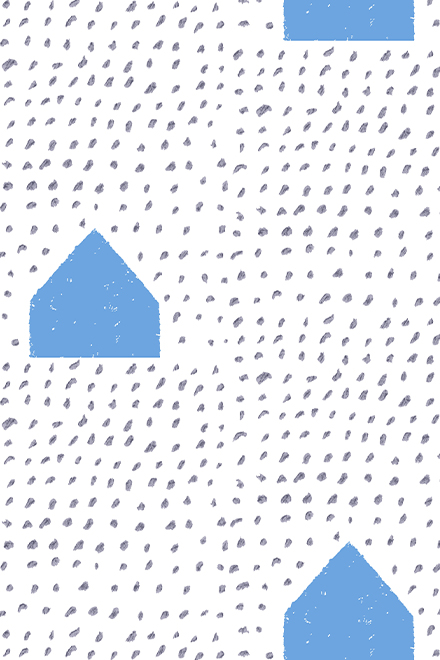
朝目覚めると、いつもと違う静かな気配がただよっている。
起き上って障子をあけると雪が音もなく降っている。
たえまなく舞い落ちる雪が
空も家もすべてを白くふんわりと包みこんでいく。
(脇阪 克二)
"A winter’s morn"(2004,by Katsuji Wakisaka)
I woke up to a supremely peaceful morning,
I open my window,
Snow flakes falling, without making a sound.
They dance in the sky,
Cover the sky and my room with a fluffy touch.
| English translation by LI XIAO XIAO |
"Un matin hivernal"(2004, par Katsuji Wakisaka)
Le matin au réveil, une atmosphère calme,
différente des autres jours, flotte dans l'air.
En ouvrant les portes coulissantes,
j'aperçois la neige qui tombe sans un bruit.
La neige qui tombe en dansant continuellement
Enveloppe aussi bien le ciel que les maisons d'une épaisse nappe blanche.
| Traduction française par Jean-Baptiste Fauvel Matsumoto |
"冬日清晨"(2004, 胁阪 克二)
冬日晨起,屋外出奇安靜。
起身開窗,雪無聲落下。
無瑕雪花,輕盈紛謝,
天空和房子变得银装素裹。
| 中译 : 李 瀟瀟 |
→こちらのテキスタイルデザイン商品
(Textile products with this pattern)
平成28年12月25日 日曜日号
“乱 平成28年”
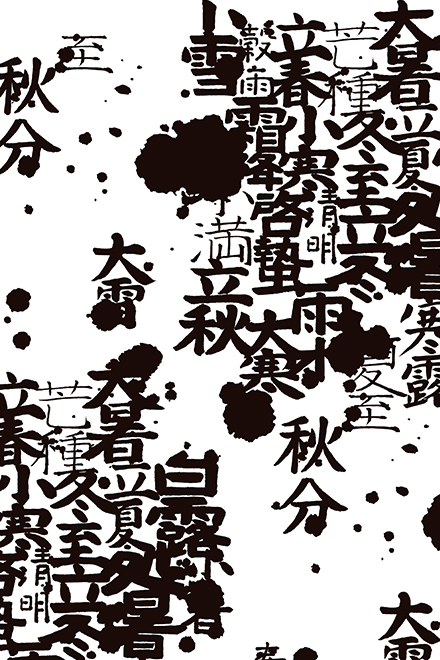

たっぷり墨をふくんだ筆を
真白い紙の上に持っていった
ところでボタッと墨が落ちる。
しまったと思ったがもうおそい。
続けてポタポタッと……。
心が乱れるが24節気を書く。
これも習作の一枚として
残しておこう。
(脇阪 克二)
"Disorder"(2016,by Katsuji Wakisaka)
While I carry my painting brush full of ink above the white paper,
A drop dripped heavily.
Ah no! But it’s too late,
And other drops follow.
It disordered my mind but I still wrote the 24 solar terms.
I will keep this painting as a special work.
| English translation by LI XIAO XIAO |
"Désordre"(2016, par Katsuji Wakisaka)
Alors que je porte mon pinceau plein d'encre Au dessus de ma feuille toute blanche, Une goutte tombe lourdement. Ah non!... Trop tard. Et d'autres gouttes suivent… Mon cœur est bouleversé mais J'écris tout de même les 24 cycles solaires. Je garderai également cet travail Comme feuille d'exercice.
| Traduction française par Jean-Baptiste Fauvel Matsumoto |
"亂"(2016, 胁阪 克二)
我將畫筆蘸滿墨,移到白紙之上。
啪嗒。
一滴墨落在紙上。
想補救但爲時已晚。
啪嗒、啪嗒啪嗒……
墨汁接連滴下。
我心神不定地書下24節氣,
並決定把它作爲一張特別的習作留下。
| 中译 : 李 瀟瀟 |
→こちらのテキスタイルデザイン商品
(Textile products with this pattern)
平成28年12月24日 土曜日号
“南天竹 平成24年”
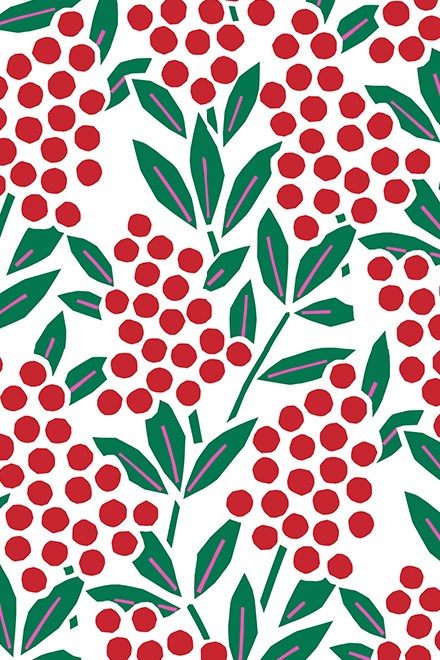
難を転じるということから縁起のいい木とされ
鬼門などに植えられてきた。
注意してみると、なるほど家の角に
植えられていることが多い。
南天は日本人の暮らしに
深く根付いてきたものなのだと思う。
(脇阪 克二)
"Nantenchiku / Nandina bamboo"(2012,by Katsuji Wakisaka)
Nandina(nanten) is a homophone for ’diverting misfortune’ and therefor is always placed in unlucky direction(northeastern).
Nandina may pops up in the corner of your house, as it can be found everywhere in Japan.
Lucky nandina is deeply rooted in our life, isn’t it?
| English translation by LI XIAO XIAO |
"Nandina"(2012, par Katsuji Wakisaka)
Tirant ses origines de l'expression “Nan o tenjiru” (Tourner les difficultés, littéralement), le Nanten, ou Nandina dans nos contrées, est considéré comme un arbre porte-bonheur, souvent planté dans les lieux aux ondes négatives. En y regardant de plus près, il est vrai qu'ils sont souvent plantés aux coins des maisons. Il me semble que le Nandina est profondément enraciné dans la vie quotidienne des japonais.
| Traduction française par Jean-Baptiste Fauvel Matsumoto |
"南天竹"(2012, 脇阪 克二)
「南天」日文諧音「難轉」,寓意逢凶化吉,
作爲吉祥的植物,常種植在東北方位的鬼門來避邪。
稍微留心會發現,很多日本人都把它種在家屋的角上。
南天竹已然深深根植於日本人的日常生活中了。
| 中譯 : 李 瀟瀟 |
→こちらのテキスタイルデザイン商品
(Textile products with this pattern)
平成28年12月21日 水曜日号
“日々 平成20年”

昨日、今日、明日と続いていく日々。
同じくりかえしのような毎日。
でも、ふと目にした花の美しさを
流れゆく雲の美しさを感じるならば
人生は素敵な物語を語りはじめるだろう。
(脇阪 克二)
"Hibi / Daily pleasures"(2008,by Katsuji Wakisaka)
Time passes, from yesterday to today, and to tomorrow.
Nothing out of the ordinary.
But if you are touched by the beauty of a flower,
Or the artistic movement of the clouds,
You will surely have another wonderful stories to tell.
| English translation by LI XIAO XIAO |
"Le temps"(2008, par Katsuji Wakisaka)
Hier, aujourd'hui, demain, le temps passe. Les jours se répètent à l'identique. Mais si vous êtes touchés par la beauté d'une fleur ou le mouvement artistique des nuages, vous arriverez sûrement à raconter de magnifiques histoires dans votre vie.
| Traduction française par Jean-Baptiste Fauvel Matsumoto |
"日常"(2008, 脇阪 克二)
昨天,今天,明天
日常循環往複
那些不經意看到的花
天邊流動的雲
當你感受到它們的美
人生又有了一個好故事可以講
| 中譯 : 李 瀟瀟 |
→こちらのテキスタイルデザイン商品
(Textile products with this pattern)
平成28年12月17日 土曜日号
“東山三十六峰 平成24年”

「ふとん着て 寝たる姿や 東山」と詠われたように、
なだらかな起伏を持つ東山連峰。
街からも近く、京都のたたずまいに
潤いを与えている。
山裾には修学院離宮、
詩仙堂、銀閣寺、哲学の道、
南禅寺、八坂神社、清水寺などが連なる。
(脇阪 克二)
"Higashiyama 36 peaks"(2012,by Katsuji Wakisaka)
The following ku by Ransetsu was famous:
"East mountain / the form of one sleeping / in his futon"
The Higashiyama mountain range and stretches near to the town,
Embellishing the old city with a gentle cueve.
At the foot of it, there are
Shugakuin Imperial Villa, Shisen-do Hall, Ginkaku-ji Temple, Philosopher's Walk, Nanzen-ji Temple, Yasaka-jinja Shrine and Kiyomizu-dera Temple.
| English translation by LI XIAO XIAO |
"Les 26 pics d’Higashiyama"(2012, par Katsuji Wakisaka)
Ce poème de Ransetsu est extrêmement célèbre: “Montagne de l'Est, son corps endormi, dans un futon”. La chaîne de montagne d’Higashiyama est proche du centre-ville et embellit la ville d’une fraîcheur naturelle. Elle accueille la villa impériale Shugakuin, le Shisen-do, le pavillon d'argent, le chemin de la philosophie, le Nanzen-ji, le sanctuaire Yasaka et le temple Kiyomizudera.
| Traduction française par Jean-Baptiste Fauvel Matsumoto |
"東山三十六峰"(2012, 胁阪 克二)
服部岚雪寫有俳句“遙望東山,如人蓋被臥躺。”
描繪起伏的東山連峰。
東山緊鄰京都城區,
爲千年古城繪上一道優雅的曲線。
山麓上連著修學院離宮、詩仙堂、銀閣寺、哲學之道、南禅寺、八坂神社、清水寺等名勝古迹。
| 中译 : 李 瀟瀟 |
→こちらのテキスタイルデザイン商品
(Textile products with this pattern)
平成28年12月14日 水曜日号
“時雨(しぐれ) 平成16年”

古来より自然とともに歩んできた日本人は
気象にまつわる言葉をたくさん編み出してきた。
雨もそのひとつで季節や時刻、
降り方などによって微妙に使い分けている。
時雨は晩秋から初冬にかけてしとしとと
降ったりやんだりする雨。
日本人のこまやかな感受性を感じる。
(脇阪 克二)
"Shigure / Light rainfall"(2004,by Katsuji Wakisaka)
Japan is surrounded by beautiful nature and Japanese have a lot of unique words to express nature.
Among them, many are about weather.
Names of rain vary in seasons, time of day and tendency.
Shigure means rain which starts and stops frequently in late fall and early winter.
These untranslatable words reflect the delicate sensibility of Japanese.
| English translation by LI XIAO XIAO |
"Bruine"(2004, par Katsuji Wakisaka)
Les Japonais, qui depuis les temps immémoriaux vivent avec la nature,
ont inventé une multitude de mots à propos du climat.
Même pour la pluie, il en existe plusieurs
dont leur utilisation diffère selon la saison,
l'heure ou bien la façon de tomber.
La bruine tombe doucement les soirs
d'automne jusqu'au début de l'hiver, par intermittence.
Je ressens la délicate sensibilité japonaise.
| Traduction française par Jean-Baptiste Fauvel Matsumoto |
"時雨"(2004, 胁阪 克二)
日本人憑借自古對自然風物敏銳感知,
創造了很多關于氣象的獨特詞彙。
就下雨而言,根據季節,時刻,雨勢的不同,
雨的名稱也不同。
時雨,指秋末初冬的陣雨。
簡單一詞,包含了日本人對自然四季的細膩感受。
| 中译 : 李 瀟瀟 |
平成28年12月10日 土曜日号
“大雪 平成26年”
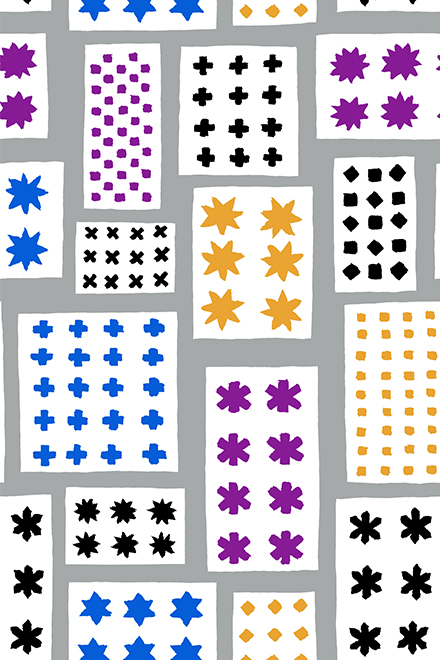
山の峰が雪におおわれ
平地も北風が吹き
いよいよこれから冬将軍到来の季節。
今年はどんな冬になるのだろうか。
しかし冬は寒く夏は暑いのがいい。
雪が降って暗く寒い冬には
冬独特の情緒や楽しみがある。
そして春を迎える喜びもわく。
四季それぞれ変化のあることが
生きていくことをどれほど豊かに
してくれることか。
(脇阪 克二)
"Heavy snow"(2014,by Katsuji Wakisaka)
Caps of snow standing on the peaks,
The north wind is whistling through the ground.
Severe winter is coming.
I wonder how cold this winter will be.
However, it's a mercy that hot in summer and cold in winter.
Grey skies, dark evenings and bitter cold weather are also counts as charm of the winter.
Being tolerant of this, we are long for spring.
Feeling and enjoying the change of the seasons makes our lives picturesque.
| English translation by LI XIAO XIAO |
"Grandes neiges"(2014, par Katsuji Wakisaka)
Les sommets des montagnes recouverts de neige, Le vent du Nord souffle dans les plaines, Annonçant la venue imminente du rude hiver. Je me demande à quel point cet hiver sera difficile. Toutefois, l'hiver est censé être froid, comme l'été se doit d'être chaud. La neige fraîche et les nuits sombres hivernales, Une atmosphère unique, attendue avec plaisir. La joie de la venue du printemps est latente. Le changement des saisons nous apporte une richesse inestimable au quotidien.
| Traduction française par Jean-Baptiste Fauvel Matsumoto |
"大雪"(2014, 脇阪 克二)
皚皚白雪覆蓋山頂,
寒冷北風呼嘯過平地,
嚴冬將至。
今年會迎來一個怎樣的冬天呢?
我喜歡冬季寒冷,夏日酷熱。
飛雪陰霾的料峭寒冬,
充滿獨特的風景與樂趣,
也喚起我們對春天的喜盼。
四季的變幻無常,
讓人生變得充實又富有趣味。
| 中譯 : 李 瀟瀟 |
→こちらのテキスタイルデザイン商品
(Textile products with this pattern)







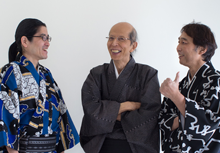



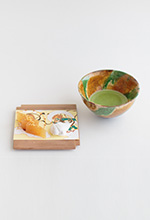
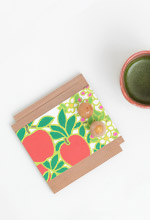
 お問い合わせ窓口
お問い合わせ窓口